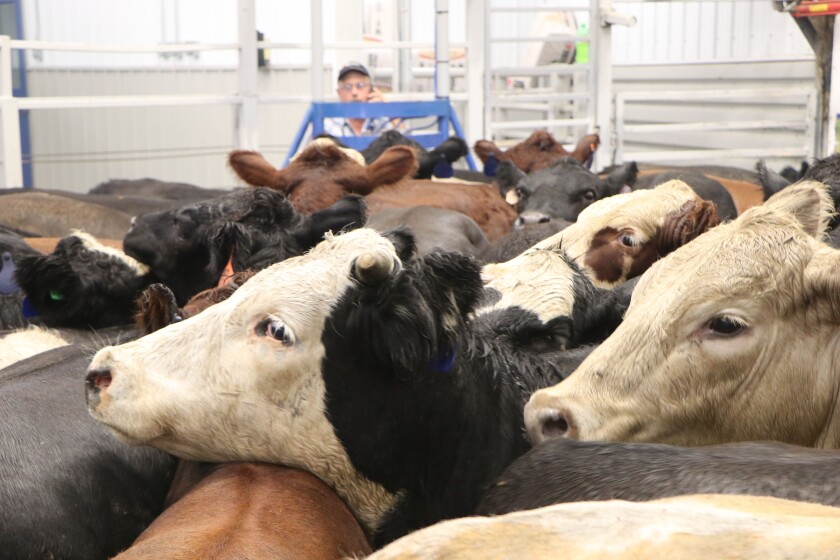Securing Success: Bagley Risk Management Solutions
Understanding Livestock Danger Protection (LRP) Insurance: A Comprehensive Guide
Browsing the world of livestock danger protection (LRP) insurance policy can be a complex venture for lots of in the agricultural market. This kind of insurance policy offers a safeguard versus market variations and unforeseen conditions that could influence animals producers. By recognizing the intricacies of LRP insurance, producers can make educated decisions that might secure their operations from financial risks. From how LRP insurance functions to the numerous coverage options offered, there is much to discover in this comprehensive guide that might possibly shape the method animals manufacturers come close to threat management in their companies.

How LRP Insurance Policy Works
Periodically, recognizing the technicians of Livestock Threat Security (LRP) insurance policy can be intricate, but damaging down just how it functions can supply clarity for farmers and ranchers. LRP insurance policy is a danger administration tool designed to shield animals producers against unanticipated cost decreases. It's essential to keep in mind that LRP insurance is not a profits assurance; instead, it concentrates entirely on price danger protection.
Qualification and Protection Options

When it comes to protection choices, LRP insurance policy supplies manufacturers the adaptability to pick the insurance coverage degree, protection period, and recommendations that best suit their threat administration needs. By comprehending the eligibility standards and insurance coverage alternatives readily available, livestock producers can make informed choices to take care of danger successfully.
Benefits And Drawbacks of LRP Insurance Policy
When reviewing Animals Threat Security (LRP) insurance, it is necessary for animals producers to weigh the disadvantages and benefits intrinsic in this risk management device.

One of the key advantages of LRP insurance policy is its ability to supply protection against a decrease in livestock costs. Additionally, LRP insurance coverage supplies a level of flexibility, enabling manufacturers to tailor protection degrees and plan durations to match their particular requirements.
However, there are additionally some drawbacks to take into consideration. One restriction of LRP insurance policy is that it does not protect against all kinds of risks, such as condition episodes or natural disasters. Costs can often be expensive, particularly for producers with large animals herds. It is critical for manufacturers to carefully analyze their specific danger exposure and economic circumstance to figure out if LRP insurance coverage is the right danger administration device for their operation.
Recognizing LRP Insurance Policy Premiums

Tips for Making Best Use Of LRP Advantages
Maximizing the benefits of Livestock Threat Defense (LRP) insurance needs critical preparation and aggressive danger administration - Bagley Risk Management. To maximize your LRP insurance coverage, think about the adhering to pointers:
Consistently Analyze Market Problems: Remain educated regarding market patterns and rate variations in the livestock market. By monitoring these elements, you can make enlightened choices about when to buy LRP protection to secure versus possible losses.
Establish Realistic Protection Degrees: When choosing insurance coverage degrees, consider your production expenses, market price of livestock, and prospective risks - Bagley Risk Management. Setting realistic coverage degrees ensures that you are effectively shielded without paying too much for anonymous unnecessary insurance try this website coverage
Diversify Your Coverage: Rather of counting only on LRP insurance policy, take into consideration expanding your danger monitoring techniques. Incorporating LRP with various other threat management devices such as futures contracts or options can give thorough insurance coverage against market uncertainties.
Testimonial and Change Protection Frequently: As market conditions transform, regularly review your LRP insurance coverage to guarantee it straightens with your present threat direct exposure. Adjusting insurance coverage levels and timing of acquisitions can assist optimize your threat security approach. By complying with these suggestions, you can take full advantage of the benefits of LRP insurance policy and protect your animals operation versus unexpected threats.
Final Thought
To conclude, animals danger defense (LRP) insurance coverage is a valuable tool for farmers to take care of the monetary threats related to their animals procedures. By comprehending just how LRP works, eligibility and insurance coverage alternatives, along with the pros and cons of this insurance policy, farmers can make educated decisions to secure their livelihoods. By thoroughly considering LRP costs and executing methods to take full advantage of advantages, farmers can mitigate potential losses and make certain the sustainability of their operations.
Livestock producers interested in acquiring Animals Threat Protection (LRP) insurance coverage can discover an array of qualification criteria and protection choices tailored to their particular livestock procedures.When it comes to coverage options, LRP insurance coverage uses manufacturers the adaptability to pick the insurance coverage degree, insurance coverage duration, and recommendations that ideal match their threat monitoring demands.To realize the details of Animals Threat Defense (LRP) insurance policy totally, recognizing the aspects affecting LRP insurance policy costs is crucial. LRP insurance costs are determined by different elements, consisting of the insurance coverage degree selected, the expected price of animals at the end of the insurance coverage duration, the type of livestock being guaranteed, and the size of the protection period.Testimonial and Change Insurance Coverage Routinely: As market conditions transform, regularly evaluate your LRP insurance coverage to guarantee it aligns with your current threat exposure.